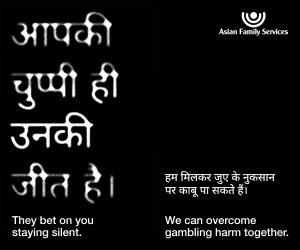Lattes, Lofts & Lost Legacies

So here I am, standing on a cobblestone street with a slight sourdough and self-satisfied smell, latte in hand, guilt in my heart. I've arrived at last. Apartments within my budget are listed in the neighbourhood where I used to stroll with longing (and a feeling that I could never afford the rent of a broom closet here). However, as I look at the recently painted murals and the simple cafés, I can't help but wonder: Is purchasing something here an act of appropriation or achievement?
Irony of Arrival
Gentrification is cruelly poetic in its irony. The very communities that draw the risk-takers, artists, and dreamers—the ones who give a place life — become victims of their own allure. The culture leaves once the kombucha arrives.
This urban paradox has long been studied by sociologists. According to a 2023 Brookings Institution report, gentrification can raise property values by up to 45%, but it frequently results in the eviction of more than 30% of long-term residents in ten years. The pattern is foreseeable: disinvestment drives down prices, innovative newcomers enter the market, the atmosphere improves, and then—shame!—the original community is priced out before you can say "cold brew."
Moral Mortgage
Purchasing real estate in a gentrified area is akin to taking out a moral mortgage. On the one hand, you're funding schools, safety, and some appearance of prosperity. However, you can't get rid of the impression that you're engaging in an urban exorcism, eradicating the very spirits that gave the place its soul.
However, it's important to remember that not all change is displacement. Reclamation, reinvestment, or revitalization are some examples. The erasure of history, people, and culture is the issue, not newcomers in and of themselves. Something intangible dies when a vegan candle shop called SereniTea replaces the mom-and-pop sari shop.
Economics, Empathy & Espresso
We must acknowledge that the issue of housing affordability is a structural quagmire rather than a moral dichotomy. According to research by the National Community Reinvestment Coalition, 20% of American neighborhoods experienced gentrification between 2013 and 2020, primarily in places like New York, San Francisco, and Washington, D.C. Who is excluded when people move in is the problem, not the fact that people move in.
What then should a responsible buyer do? There are things you can do besides giving up the city and going into a hermitage (which is tempting on Mondays). If at all possible, purchase from local developers. Encourage local projects. Participate in community meetings outside of parking issues. Yes, even though the espresso machine appears to be from the Mughal era, you should still visit the old café.
Guilt Trip Served with Oat Milk
Guilt might be a moral levy on the contemporary urban dream, the price we pay for privilege. But guilt is just a performance if nothing is done about it. "One's conscience must not merely be pricked; it must be provoked into participation," as Shashi Tharoor himself might put it.
If you can afford to purchase in a gentrified neighborhood, do so with a more open mind and a more generous heart. Keep in mind that your new house is built on top of histories—stories of tenacity, migration, and community that shouldn't be erased by the newest minimalist fad.
So, yes, purchase the home. Have a latte. However, give a generous tip, support local businesses, and respect the spirit of the streets you now call home. Because the narrative should never be owned by the owner of the property.
So here I am, standing on a cobblestone street with a slight sourdough and self-satisfied smell, latte in hand, guilt in my heart. I've arrived at last. Apartments within my budget are listed in the neighbourhood where I used to stroll with longing (and a feeling that I could never afford the rent...
So here I am, standing on a cobblestone street with a slight sourdough and self-satisfied smell, latte in hand, guilt in my heart. I've arrived at last. Apartments within my budget are listed in the neighbourhood where I used to stroll with longing (and a feeling that I could never afford the rent of a broom closet here). However, as I look at the recently painted murals and the simple cafés, I can't help but wonder: Is purchasing something here an act of appropriation or achievement?
Irony of Arrival
Gentrification is cruelly poetic in its irony. The very communities that draw the risk-takers, artists, and dreamers—the ones who give a place life — become victims of their own allure. The culture leaves once the kombucha arrives.
This urban paradox has long been studied by sociologists. According to a 2023 Brookings Institution report, gentrification can raise property values by up to 45%, but it frequently results in the eviction of more than 30% of long-term residents in ten years. The pattern is foreseeable: disinvestment drives down prices, innovative newcomers enter the market, the atmosphere improves, and then—shame!—the original community is priced out before you can say "cold brew."
Moral Mortgage
Purchasing real estate in a gentrified area is akin to taking out a moral mortgage. On the one hand, you're funding schools, safety, and some appearance of prosperity. However, you can't get rid of the impression that you're engaging in an urban exorcism, eradicating the very spirits that gave the place its soul.
However, it's important to remember that not all change is displacement. Reclamation, reinvestment, or revitalization are some examples. The erasure of history, people, and culture is the issue, not newcomers in and of themselves. Something intangible dies when a vegan candle shop called SereniTea replaces the mom-and-pop sari shop.
Economics, Empathy & Espresso
We must acknowledge that the issue of housing affordability is a structural quagmire rather than a moral dichotomy. According to research by the National Community Reinvestment Coalition, 20% of American neighborhoods experienced gentrification between 2013 and 2020, primarily in places like New York, San Francisco, and Washington, D.C. Who is excluded when people move in is the problem, not the fact that people move in.
What then should a responsible buyer do? There are things you can do besides giving up the city and going into a hermitage (which is tempting on Mondays). If at all possible, purchase from local developers. Encourage local projects. Participate in community meetings outside of parking issues. Yes, even though the espresso machine appears to be from the Mughal era, you should still visit the old café.
Guilt Trip Served with Oat Milk
Guilt might be a moral levy on the contemporary urban dream, the price we pay for privilege. But guilt is just a performance if nothing is done about it. "One's conscience must not merely be pricked; it must be provoked into participation," as Shashi Tharoor himself might put it.
If you can afford to purchase in a gentrified neighborhood, do so with a more open mind and a more generous heart. Keep in mind that your new house is built on top of histories—stories of tenacity, migration, and community that shouldn't be erased by the newest minimalist fad.
So, yes, purchase the home. Have a latte. However, give a generous tip, support local businesses, and respect the spirit of the streets you now call home. Because the narrative should never be owned by the owner of the property.











Leave a Comment